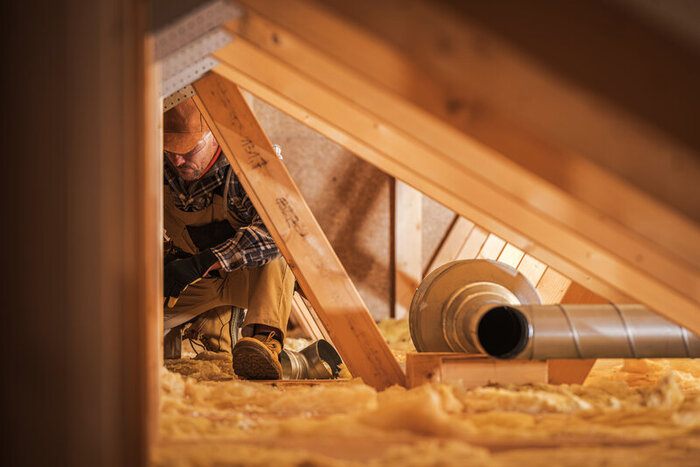
Take a peek into the average Bay Area attic, and you’re likely to see a big, empty space laden with cobwebs, dust, and some stored odds and ends. However, contrary to how it might appear, your house’s attic is essential to whole-home comfort, energy efficiency, and air quality.
While homes with a flat roof don’t have attic spaces, sloped-roof homes almost always have some type of attic space between the uppermost living space and the roof. Attics are usually categorized by their size and use:
Regardless of your attic type, it’s there for a reason, and optimizing the attic space for comfort, energy efficiency, and indoor air quality is always beneficial.
What seems like a big waste of space is actually a very intentional part of a home’s design. Here are five ways your attic works as part of the home’s critical systems.
Whole-home comfort, particularly during peak hot and cold months, depends on your attic’s ability to prevent solar heat gain during the summer months while preventing heat loss to the outside of the home during the winter season. In this way, the attic is one of the most significant parts of your home’s thermal envelope.
However, the attic can’t insulate your home on its own. It relies on other critical home systems - like a high-quality, well-maintained roof, to do its job correctly. As a professional attic insulation company, we frequently recommend routine attic inspections every two years or two. Equally important is scheduling annual roof inspections from a local, licensed roofer. Even the best-designed attic can’t do its job if the roof is poorly maintained or needs repair.
Your home’s insulation system is another key player in home comfort and energy efficiency. And, where better to install an abundantly adequate amount of insulation than in the attic space? The spaces between the attic’s floor joists are the perfect space to install insulation. And, because the size and spacing of these joists are part of the building code, insulation manufacturers design insulation batts to perfectly conform to the spaces.
While the air space between the roof and the attic floor goes a short way to protect living spaces from solar heat gain or heat loss, insulation is the most crucial factor determining how much heat a home loses/gains throughout the year.
Balancing home comfort requires insulation to protect heat/gain loss, air sealing to prevent excess loss of hot/cold air, and adequate ventilation to release toxic indoor air while maintaining a fresh air supply into the home.
Healthy ventilation also helps to prevent the “stack effect.” Here is an explanation of the stack effect from This Old House:
In wintertime, the warmest air in your house will rise by convection to the highest areas of your living space. But it doesn’t stop there; it can escape into the attic through many leakage points: recessed light fixtures in the second-floor ceiling, gaps around the drop-down stair to the attic, and numerous clearance holes drilled from the attic to run wiring or install grilles connected to attic ductwork. When the air you paid to heat escapes into the attic, it creates negative pressure (suction) inside the house that draws in cold air from leakage points in lower sections of the house.
The combination of adequate air sealing, insulation, and ventilation mitigates the stack effect and promotes whole-home energy efficiency.
That’s a perfect segue to the ways an attic benefits occupants below. As mentioned before, the combination of insulation, air sealing, and adequate ventilation go a long way towards keeping you and other home occupants comfortable. More than that, an optimized attic space saves you significantly when it comes to energy consumption and spending.
Most homeowners spend at least 50% of their utility spending on heating and cooling their homes. By ensuring your attic is well-built and adequately insulated, you reduce energy spending and the lifetime costs associated with HVAC repairs and replacement because you minimize unnecessary wear and tear.
Many Bay Area homeowners decide to make that “wasted space” work for them. By converting the attic into a living space, you can:
Always schedule an attic inspection before deciding how to move forward with your attic spaces. Some attics require more work than others to make them structurally sound, so the more you know ahead of time, the better you can plan for the future.
Would you like to get the most out of your attic? Schedule a consultation with Attic Solutions. We’ll do a walk-through of your attic, discuss your goals, and review all of the possibilities.